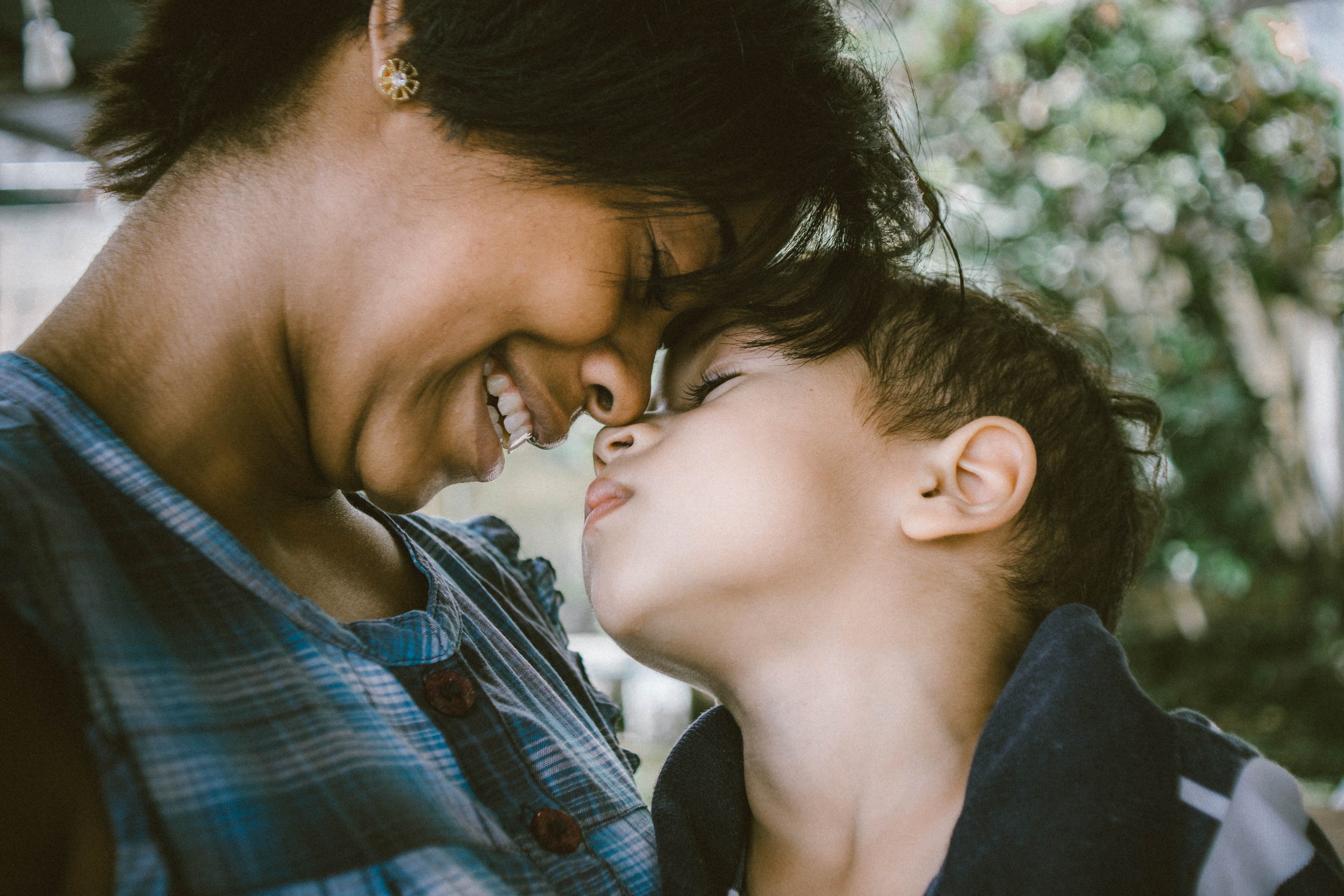Mindful Parenting
Mindful Parenting: THE FIRST 10
Let me set the scene for you. I just got home from work and child-pick-up duty (1.5 hours round trip) and we’ve stumbled in the door and I’m in robot-mode. Put everything away from the day, start dinner prep, change out of work clothes into anything stretchy and 5 years-soft, guide my children toward healthy after-school snacks, and take a deep breath (if there’s time). Does any of this sound familiar or am I alone in the world?
A couple months ago I was in an ABA class, and the instructor asked, in a no-big-deal way, “When was the last time you had a conversation with a 4 year old’s eyes.” Seems simple, but definitely not always a first when I am knee deep in tasks and I am trying to juggle all the balls at once. It seems so simple- have a conversation, face-to-face with my child and really try to listen.
Let’s be real. When there are a million other tasks to do in the evening, the stress of not measuring up to the “mindful parent” expectation just becomes another reason to give up (or have an extra glass of wine). In an effort to change and try to be the best juggling mom I can be, I asked myself- where can I start? I decided 10 minutes was a good place to start.
I started with the “first 10” when we get home. And truthfully, it’s not even the first 10. They come in and put their book bags away, put lunchboxes on the counter, and grab a snack (because ravenous children could give two flying hoots about mindfulness). So our FIRST 10 really becomes the second or third 10. And I have two kids so we flip-flop, but making sure to give each of them 10 undivided minutes of my time before I turn into the task-master. This has made all the difference in their attitudes toward me, their willingness to help with chores, and most importantly, their connectedness to me.
Here are some practical ways to switch to mindfulness mode if you decide to give the FIRST 10 a try:
1. Eliminate distractions- I think we can all agree that the number of electronic devices and media outlets in our lives are a recipe for sensory-overload. While these technological advances are not evil all-together, we can simply put them aside for the FIRST 10 to send the message to our kiddos that time with them is more important. The best thing that can happen during this time is for an alert to go off during that time with your child and ignoring it.. This will speak volumes to your child and communicate the importance of your time together.
2. Get down on their level- It doesn’t matter if your child is 3 or 13, being at eye level and striving for eye contact is crucial in connecting and bonding. It seems simple and obvious, but how much more impacting is a conversation when we can read facial cues and understand the emotion behind someone’s words?
3. Let the child lead- There are plenty parts of the day where the adults are in charge in your child’s life. For this 10 minutes, allow the child to lead the play, lead the conversation, or lead the activity. Your child will feel more in control, thus more confident and empowered.
This may not be your life. Perhaps you've figured out the perfect balance of work-family-self time. Your first 10 may be happening every hour throughout the day because you are a stay-at-home mom or dad. Whatever the scenario, devoting uninterrupted time to our children is not revolutionary but must be intentional.
What if it seems like we don’t have time in our lives for 10 minutes of daily undivided time with our children? I think then we need to do the hard work of looking at our own lives, the way we spend our own time and ruthlessly striving for choosing this time with our children over spending it doing something else. Time is our most valuable resource and should be spent on the things in life we value the most.
Written by: Josi Garcia is the Co-Founder of ZimZum Consulting Collaboration. She is a Board Certified Behavior Analyst, holds a Masters degree in Special Education, and has experience working with schools and families supporting individuals with special needs.
Photo credit: Bruno Nascimento on Unsplash

